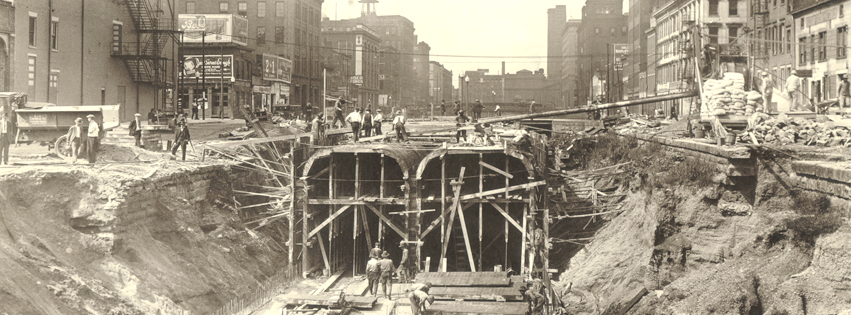Just Askin': Why was the Cincinnati subway system abandoned?

The Enquirer's Just Askin' series aims to answer the questions that no one seems to have an answer for, not even Google.
Who would've thought that public transportation could be booming here in Cincinnati?
Things seem relatively optimistic for a city that was plagued by falling ridership numbers on buses and the streetcar just years ago. The Cincinnati Connector streetcar broke ridership records last year. Ohio scored funds for a potential expansion of Amtrak, which would include routes through Cincinnati. And there's even been talk about adding new streetcar routes.
All this hubbub makes you wonder why our ancestors didn't commit to Cincinnati's most mythic public transportation project: the unfinished subway. Maybe it would have been a hit after all.
Question: Why was the Cincinnati subway never finished?
Answer: Politics and war. (What else?)
The politics of early-twentieth-century Cincinnati and the impact of World War I played a large role in why the subway was never completed, says Janice Forté, who is a member of the Cincinnati Museum Center's Cincinnati Heritage Programs. The outreach association coordinated tours of the abandoned subway tunnels for 13 years.
The story of Cincinnati's subway can go back to roughly 1910 when government officials started its planning. Forté says the subway was actually supposed to be part of a larger, 16-mile rapid transit loop. The train car would reach Ludlow Avenue and pass through St. Bernard and Norwood.
The idea behind the loop was to keep up with other big cities and reduce the flow of traffic downtown. But even the best-laid plans don't always come to fruition.
Trouble began to brew during World War I. The war increased the cost of production and resulted in delays. Around 1919, construction workers finally broke ground. Then came problems stemming from local politics. Cincinnati's political landscape changed dramatically in about 1928, moving away from a political boss concept. "When you do that, politically you start to pooh-pooh or put down previous concepts," says Forté. The new mayor saw the rapid transit loop as a holdover from the boss era, which ultimately led to the subway's demise.
On top of it all, people's attitudes and needs were changing. Forté links this to the changing social norms and attitudes war can bring. More people were moving out of downtown. They were also relying on cars, which, she says, "America has a love affair with."
The Enquirer previously wrote that the project was abandoned in 1929 with only 2.2 miles of twin tracks laid underneath Central Parkway. That's where things still stand today. You can see the boarded-up tunnel openings from Interstate-75, near the Harrison Avenue exit.
Forté says the most-asked question she gets about the subway is whether or not it would've worked. She thinks so.
"Not everybody is going to use it. Not everybody is going to use the streetcar either," she says. "But there's a percentage of the population who would."
Do you have a question for Just Askin'? Send it to us at cinlocalnews@enquirer.com.
This article originally appeared on Cincinnati Enquirer: Why was the Cincinnati subway abandoned? Does Cincinnati have a subway

